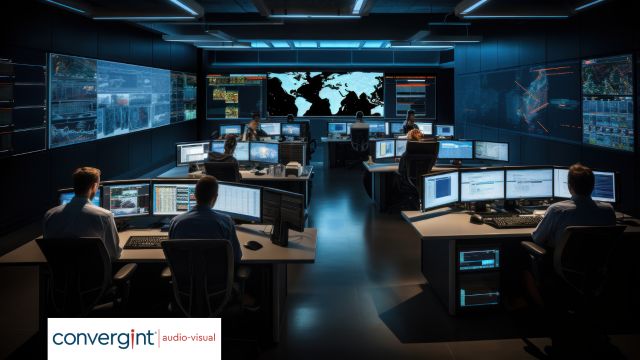For decades, security surveillance systems have been used to create situational awareness for their operators. When securing entryways and interior environments, for example, most facilities deploy surveillance cameras to monitor hallways, areas of interest, and key access points. Unfortunately, surveilling exterior spaces is rarely as straightforward. From environmental complications and lighting limitations to limited power and data infrastructure, security integrators face all sorts of challenges. Together, these obstacles can add significant costs to the overall budget of the surveillance system. As a result, customers often sacrifice exterior security due to increasing costs to the project.
Convergint has partnered with Teledyne FLIR to address these issues, simplify integration, and improve overall situational awareness by deploying a multilayered perimeter intrusion detection solution (PIDS).
The importance of advanced situational awareness
When thinking about exterior surveillance, the two most common applications to consider are perimeter protection and general surveillance. When securing a facility’s perimeter, the goal is to detect intruders at the perimeter and notify operators of potential threats. When building a system designed for general surveillance, the goal is to monitor activity in defined areas for reasons specific to their needs. For both applications, the technology available to integrators, today, represents a significant shift away from one-size-fits-all devices and toward application-specific, multilayered solutions.
In the early days of IP video, when video data storage costs were higher, many facilities deployed visible security cameras set to “record on motion,” with nuisance areas masked out to prevent unnecessary recording. As sensor technology and video analytics software evolved, many customers moved to more intelligent alarm systems that ensure they are recording key events. Unfortunately, most systems end their exterior surveillance here, leaving many of the initial environmental challenges unaddressed, such as poor lighting, inclement weather, and difficult terrain.
Solutions that were once considered to be “advanced” or “too expensive” have become more affordable and reliable. For end users and integrators alike, now is the time to consider expanding solutions to include technologies, such as thermal cameras and radar, in order to optimize exterior situational awareness.
How pairing radar and thermal cameras improve performance
Like thermal, commercial radars have come a long way. Because they come in all shapes and sizes, they prove very useful for applications looking to detect movement in designated alarm zones. When paired with a multispectral pan-tilt camera that integrates both visible and thermal sensors, the combination of the two technologies can detect, verify, and track targets in all weather conditions.
Looking forward
Today, the best solutions deploy a ground-based radar that can communicate geocoordinate data to a pan-tilt camera. With this combination, the camera is able to slew to the exact location of the threat, instead of to an established alarm zone. Once locked on, the camera can continuously track the target wherever it moves. For large, wide-area applications—from parking lots to airport tarmacs—it is often difficult to deliver complete situational awareness using visible cameras alone. Integrating radar and pan-tilt, multispectral cameras together not only overcomes obstacles that have plagued PIDS for decades but also expands site coverage for continuous and reliable situational awareness.
Convergint and Teledyne Flir
Convergint and Teledyne Flir have strategically partnered to help utilities enhance physical security. These solutions can greatly increase functionality, visibility, and reduce overall reputational risk. To learn more about the technologies discussed, contact an expert today.







